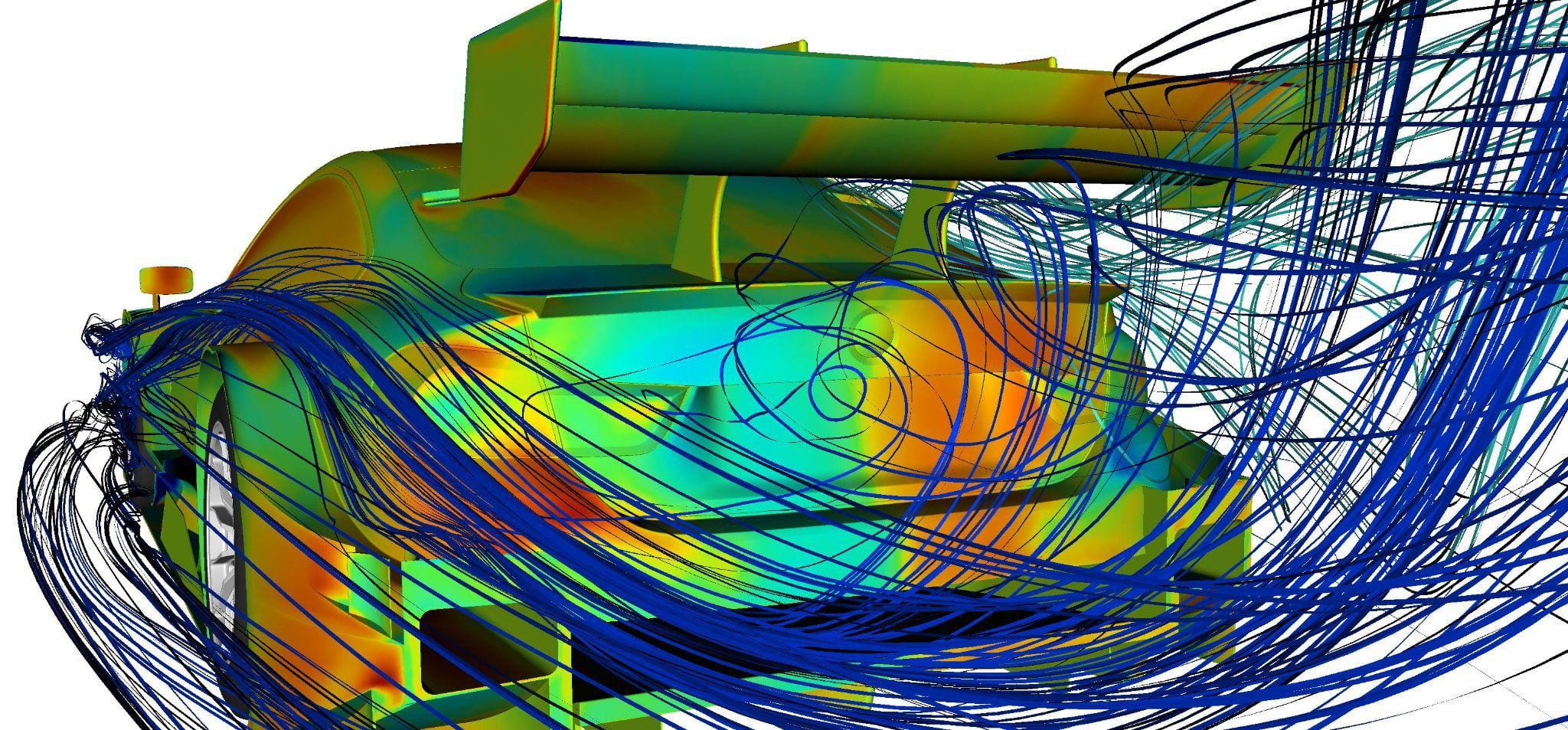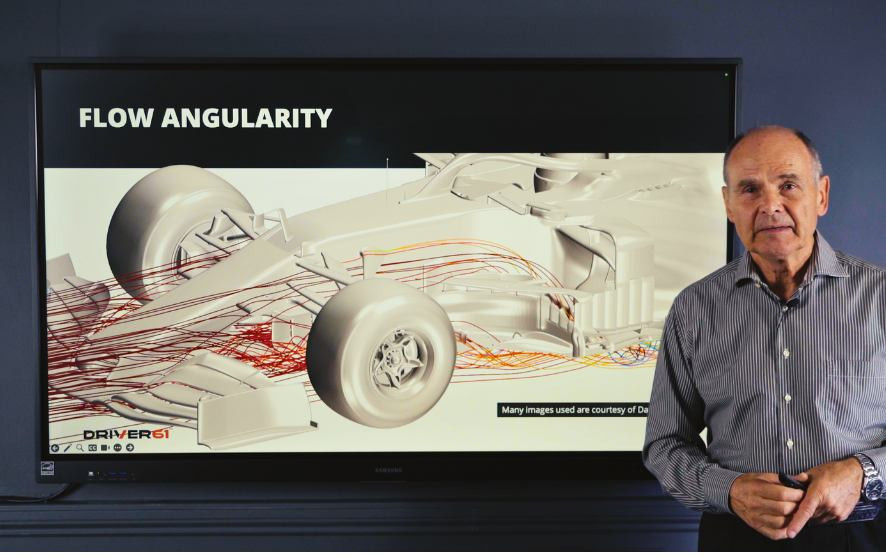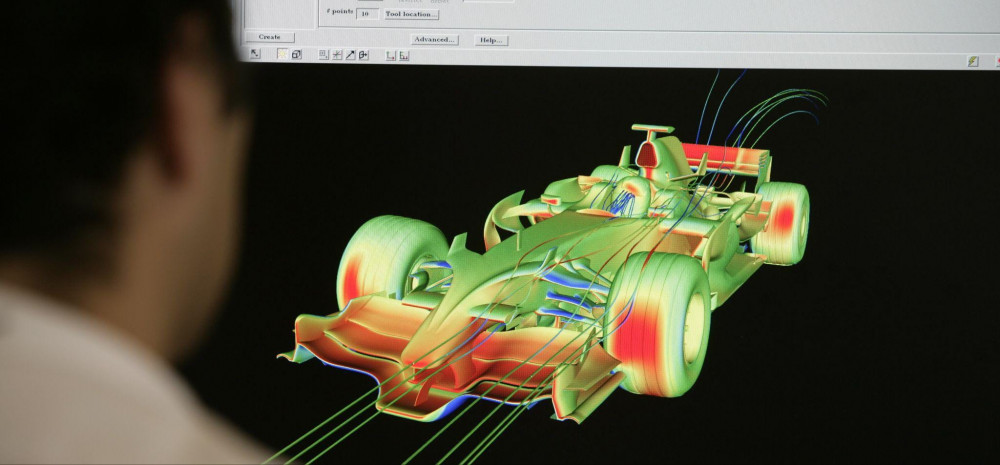"We typically start with ideas generation, what we think the car is lacking, ways to improve it and what kind of parts and body shapes we think might be able to achieve these aims." These are the words of Ola Jagied, an aerodynamicist at Mercedes AMG Petronas Formula 1 Team, describing the intricate world of computational fluid dynamics (CFD) engineering in motorsport.
Behind every F1 car's lightning-fast lap times lies a fascinating battle with physics itself. CFD engineers are the unsung heroes who harness computational power to sculpt airflow, creating the perfect balance between downforce and speed that keeps drivers glued to the track at 200mph.
.png?cx=0.5&cy=0.5)
Computational Fluid Dynamics visualisation showing airflow patterns under an F1 car - Image: Raceteq
What Does a CFD Engineer Actually Do in F1?
The role of a CFD engineer in Formula 1 extends far beyond running computer simulations. As Ola explains from his experience working on Mercedes' front wing development: "We hone in on what we want to target, we model our ideas in 3D using computer aided design software, once we have a 3D representation of our ideas we then simulate those parts using computational fluid dynamics."
This process involves several critical stages. Engineers begin with conceptual design, identifying areas where the car's aerodynamic performance can be improved. They then create detailed 3D models using CAD software before running complex CFD simulations to predict how air will behave around new components.
The Front Wing Challenge
The front wing presents one of the most complex aerodynamic challenges in F1. It's the first part of the car to meet oncoming air, making it crucial for managing airflow over the entire vehicle. CFD engineers must create designs that generate maximum downforce whilst minimising drag - a delicate balance that can make or break lap times.
As Ola describes: "It usually takes several iterations of this process before we get a finalised part that we're happy to manufacture and test at small scale using the wind tunnel we have on site."

An engineer analysing a CFD model of a Formula 1 car - Image: Raceteq
The Technical Skills Required
CFD engineering in F1 demands a unique combination of theoretical knowledge and practical application. Engineers must master complex mathematical concepts including the Navier-Stokes equations, which govern fluid flow behaviour, whilst also understanding the practical limitations of computational modelling.
Modern F1 CFD work requires expertise in specialised software packages, often custom-developed for each team's specific needs. Engineers must also understand turbulence modelling, boundary layer theory, and how to validate their computational results against real-world wind tunnel and track data.
From Simulation to Reality
The transition from digital simulation to physical testing reveals the true complexity of the role. "From time to time the new parts don't work exactly as predicted so we still do some analysis and learning at this stage," Ola notes. This requires CFD engineers to constantly refine their models and understanding of how computational predictions translate to real-world performance.
Career Pathways and Educational Requirements
Most CFD engineers in F1 hold degrees in aerospace engineering, mechanical engineering, or physics, typically at master's level or above. Ola's journey is particularly interesting - after completing a PhD in aircraft aerodynamics, he spent two years working on spacecraft with the Japanese Aerospace Agency before joining Mercedes.
This diverse background highlights an important aspect of CFD careers: the skills are highly transferable across industries. Experience in aerospace, automotive, or even marine engineering provides valuable foundation knowledge that can be applied to F1's unique challenges.

CFD simulation around a BMW M4 DTM car showing airflow patterns around the bodywork and rear diffuser - Image: BMW
The Emotional Highs and Lows
Working as a CFD engineer in F1 isn't just about technical expertise - it requires significant emotional resilience. Ola candidly describes the challenges: "The most challenging part of the job I find is when you've worked hard on an idea and it looks great in simulations so you're appropriately excited to see your work tested in the Wind Tunnel only to then see underperform."
However, the rewards make the challenges worthwhile. "My favorite parts of the job are the times when you've put a lot of effort into an idea and it turns into a game changer when it gets tested in the Wind Tunnel," Ola explains. "It's like a straight shot of dopamine. I then love it when those same parts hit the track and people start to take notice."
Real-World Impact
The 2022 season provides a perfect example of how CFD engineers must adapt under pressure. When Mercedes discovered their W13 car suffered from severe porpoising (aerodynamic bouncing), the aerodynamics department had to completely shift focus. "We had to shift a considerable amount of development into understanding whether this was aerodynamics driven," Ola recalls. The team's ability to redesign the car and reduce porpoising effects by the Barcelona Grand Prix demonstrates the crucial role CFD engineers play in problem-solving under pressure.
Industry Outlook and Salary Expectations
CFD engineering represents one of the fastest-growing career paths in motorsport. With F1 regulations increasingly limiting physical testing time, teams are investing heavily in computational capabilities. This trend is driving demand for skilled CFD engineers across all levels, from recent graduates to senior specialists.
Salaries in F1 CFD roles typically range from £35,000-£45,000 for graduate positions, rising to £60,000-£80,000 for experienced engineers, with senior specialists and team leaders earning significantly more. The role often includes travel opportunities to races and test sessions, plus the unique satisfaction of seeing your computational work translated into real-world performance gains.
Getting Started in CFD Engineering
For aspiring CFD engineers, the path typically begins with a strong foundation in fluid dynamics and computational methods during university studies. Gaining experience with commercial CFD software packages like ANSYS Fluent, Star-CCM+, or open-source alternatives like OpenFOAM provides valuable practical skills.
Building a portfolio of CFD projects, whether through university coursework, personal projects, or internships, demonstrates practical ability to potential employers. Many teams also value experience in other high-performance industries, as the fundamental principles of CFD analysis remain consistent across applications.
The world of CFD engineering in Formula 1 offers a unique blend of cutting-edge technology, intense competition, and the satisfaction of pushing the boundaries of physics. For those with the technical skills and determination to succeed, it represents one of the most rewarding career paths in modern engineering.
You can find related CFD and aerodynamics opportunities in our aerodynamics jobs section here.




